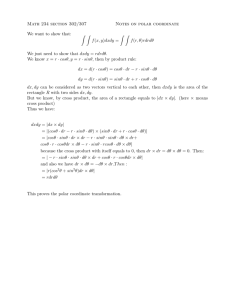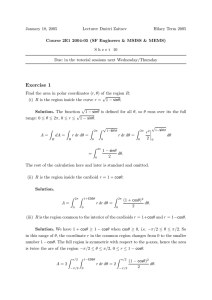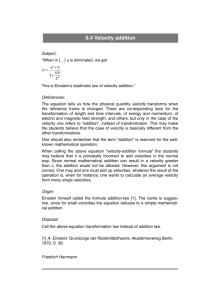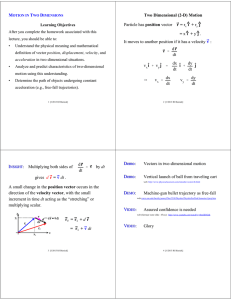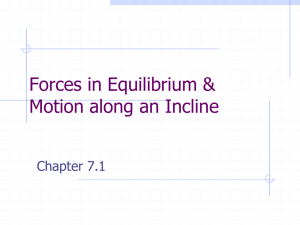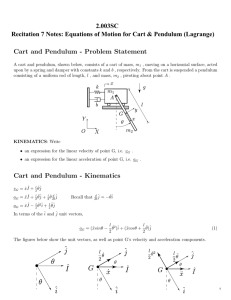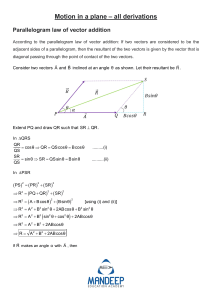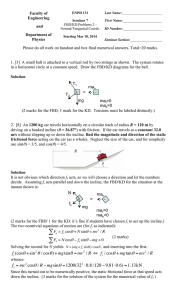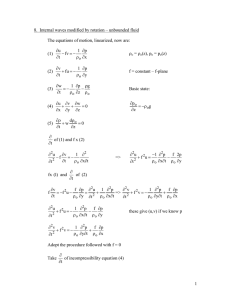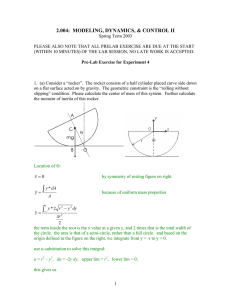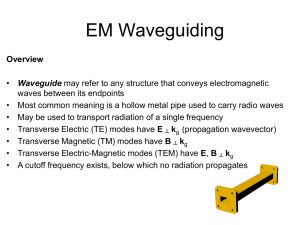Amusement Park Ride - Problem Statement 2.003SC
advertisement
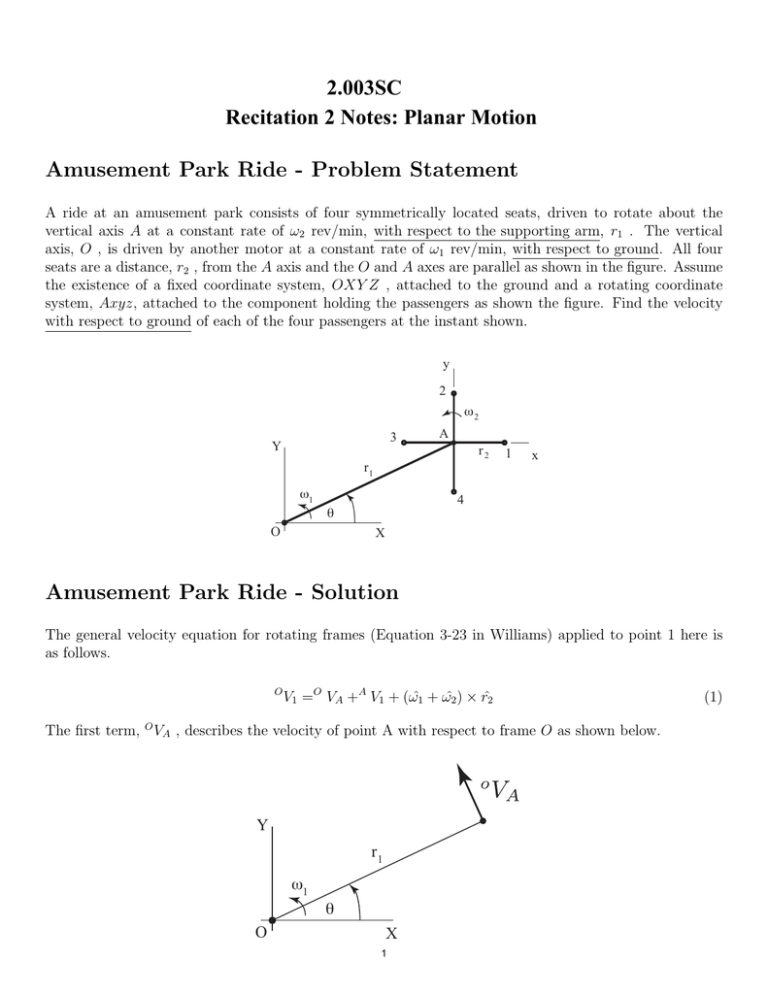
2.003SC Recitation 2 Notes: Planar Motion Amusement Park Ride - Problem Statement A ride at an amusement park consists of four symmetrically located seats, driven to rotate about the vertical axis A at a constant rate of ω2 rev/min, with respect to the supporting arm, r1 . The vertical axis, O , is driven by another motor at a constant rate of ω1 rev/min, with respect to ground. All four seats are a distance, r2 , from the A axis and the O and A axes are parallel as shown in the figure. Assume the existence of a fixed coordinate system, OXY Z , attached to the ground and a rotating coordinate system, Axyz, attached to the component holding the passengers as shown the figure. Find the velocity with respect to ground of each of the four passengers at the instant shown. y 2 ω2 3 Y A r2 r1 ω1 x 4 θ O 1 X Amusement Park Ride - Solution The general velocity equation for rotating frames (Equation 3-23 in Williams) applied to point 1 here is as follows. O V1 =O VA +A V1 + (ωˆ1 + ωˆ2 ) × rˆ2 The first term, O VA , describes the velocity of point A with respect to frame O as shown below. Y r1 ω1 θ O X 1 (1) O VA = r1 ω1 [−sinθ1 Iˆ + cosθ1 Jˆ] (2) The second term, A V1 , refers to the velocity of the point with respect to the rotating frame Axyz and is zero here. The third term describes the velocities of points 1 through 4 due to rotation which are shown below. The magnitude of the velocities is r2 (ω1 + ω2 ), because ω2 is defined with respect to the supporting arm which is itself rotating at ω1 , therefore the effective angular velocity of the component supporting the passengers is (ω1 + ω2 ). y 2 ω1 + ω2 3 A r2 1 x 4 A V1 = r2 (ω1 + ω2 )[ĵ] A A V2 = r2 (ω1 + ω2 )[−î] V3 = r2 (ω1 + ω2 )[−ĵ] A V4 = r2 (ω1 + ω2 )[î] Note that at this instant the unit vectors of frame A are aligned with those of frame O, so A V1 = r2 (ω1 + ω2 )[Jˆ] A V2 = r2 (ω1 + ω2 )[−Iˆ] A V3 = r2 (ω1 + ω2 )[−Jˆ] The velocities of points 1 through 4 with respect to ground are given by V1 =O VA +A V1 = [−r1 ω1 sinθ]Iˆ + [r1 ω1 cosθ + r2 (ω1 + ω2 )]Jˆ O V2 =O VA +A V2 = [−r1 ω1 sinθ − r2 (ω1 + ω2 )]Iˆ + [r1 ω1 cosθ]Jˆ O V3 =O VA +A V3 = [−r1 ω1 sinθ]Iˆ + [r1 ω1 cosθ − r2 (ω1 + ω2 )]Jˆ O V4 =O VA +A V4 = [−r1 ω1 sinθ + r2 (ω1 + ω2 )]Iˆ + [r1 ω1 cosθ]Jˆ O 2 A V4 = r2 (ω1 + ω2 )[Iˆ] MIT OpenCourseWare http://ocw.mit.edu 2.003SC / 1.053J Engineering Dynamics Fall 2011 For information about citing these materials or our Terms of Use, visit: http://ocw.mit.edu/terms.

